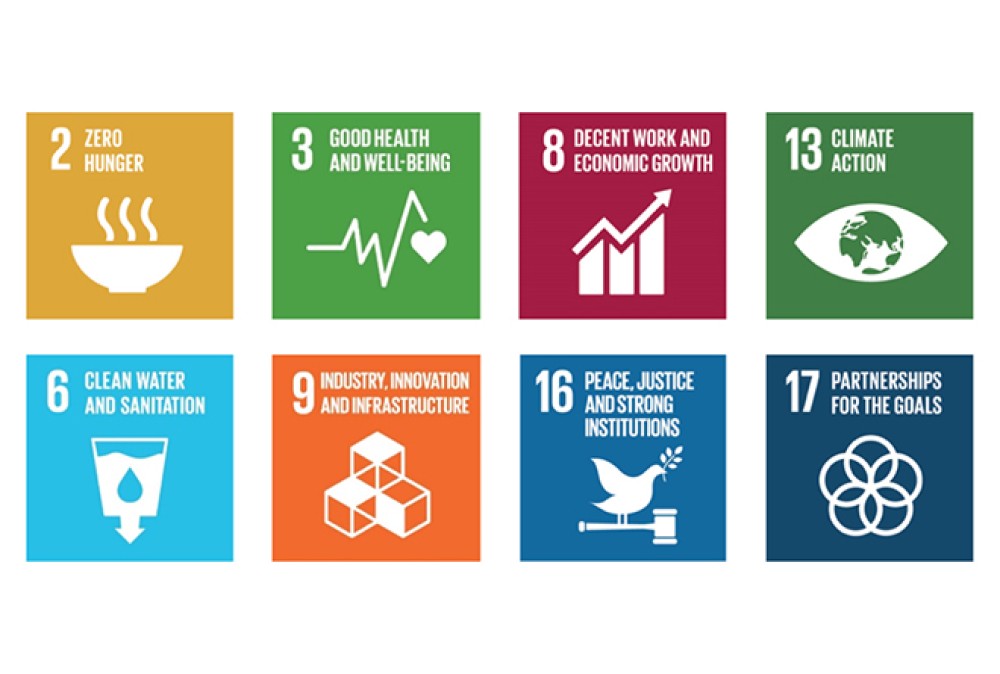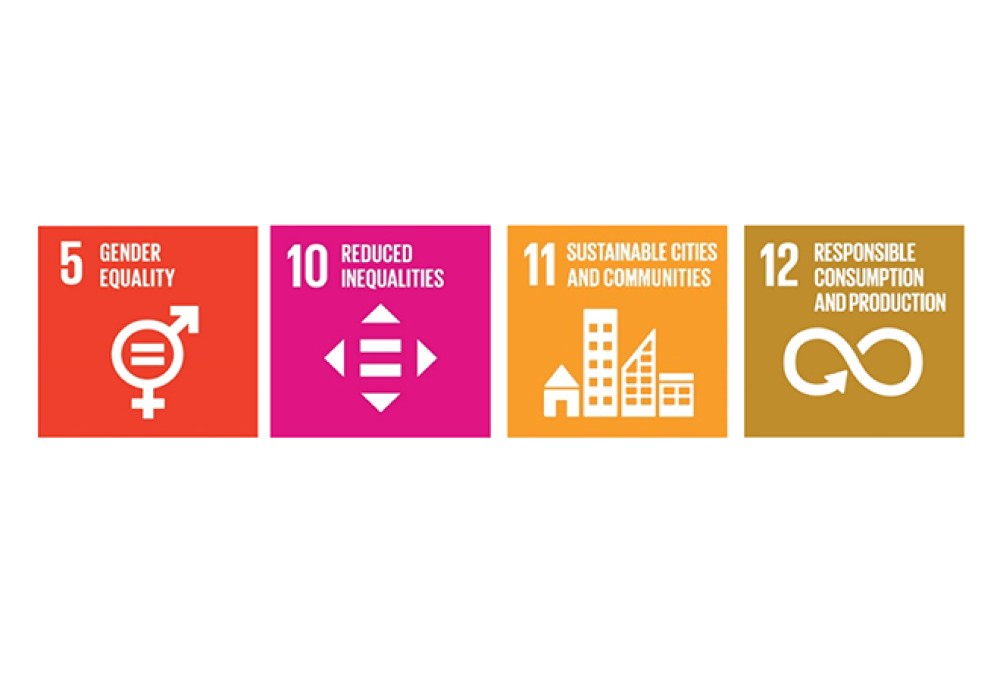African Parks' Impact on Achieving the UN Sustainable Development Goals
In 2015, the United Nations adopted the 2030 Agenda for Sustainable Development, which established a framework to achieve a better and more sustainable future for all. The framework is based on the 17 Sustainable Development Goals (SDG), an urgent call for action by and for all countries to address global challenges that pertain to poverty, inequality, climate, environmental degradation, prosperity, and peace and justice. In partnership with national governments and local communities, African Parks aims to support countries in achieving the SDGs in each landscape we work and, as our footprint across Africa continues to grow, will have expanding impact.
African Parks’ integrated model of protected area management provides extensive benefits to both people and wildlife. Our long-term investment in specific landscapes creates thriving ecosystems where biodiversity, a foundational component of sustainable development, is conserved. Over the past 20 years, African Parks has entered into long-term partnership agreements with governments in nine countries to manage and rehabilitate a vast network of 17 parks.
African Parks has achieved measurable results over this time — wildlife is increasing, biodiversity is being restored, and landscapes are being secured — providing proof of concept that well-managed protected areas in Africa can help countries deliver on their sustainable development commitments. We view development through a conservation lens and help establish local economies that provide decent jobs and create sustainable livelihoods, lifting people out of poverty and helping to educate and train the next generation.
African Parks' model is an integrated nature-based solution, which generates direct and indirect benefits for biodiversity, climate and sustainable development in a synergistic and measurable way. A healthy and functioning ecosystem provides essential ecosystem services and ground-level support for development opportunities. Well-managed protected areas are anchors of ecological and social stability and are considered one of the most cost-effective strategies for combatting climate change.
On September 23rd, 2019, the UN Secretary General convened the UN Climate Action Summit to gather stakeholders and accelerate actions to implement the Paris Agreement on Climate Change. African Parks is a member of the Nature-Based Solutions Coalition and submitted a proposition in support.
African Parks' alignment to the Sustainable Development Goals
African Parks' business approach to conservation and mission to rehabilitate and protect national parks and protected areas across the African continent directly responds to the UN's call for sustainable development action. Across the 15 parks we manage, African Parks is having a significant impact on country-level efforts to achieve the SDGs. African Parks' primary mission is conservation guided by the goal to restore and protect ecosystem services, establish security and governance, and generate socio-economic benefits. Our work goes beyond the environment-focused SDGs because human development is key to landscape scale sustainability. African Parks' work most directly aligns with the following eight SDGs:
- No Poverty (SDG 1)
- Quality Education (SDG 4)
- Decent Work and Economic Growth (SDG 8)
- Climate Action (SDG 13)
- Life Below Water (SDG 14)
- Life on Land (SDG 15)
- Peace, Justice and Strong Institutions (SDG 16)
- Partnerships for the Goals (SDG 17)
Our integrated management model intersects with the other ten SDGs to varying degrees — moderately direct and indirectly — as we endeavor to make each park ecologically, socio-politically and financially sustainable.
African Parks' impact on the Sustainable Development Goals have been classified into three tiers based on the targets associated with each of the 17 goals.

Direct Impact
National parks and protected areas, the ecosystem services they generate, and the biodiversity they conserve are necessary for the well-being of people. Setting aside land for conservation is a choice of land use made by national governments. It is our responsibility to both build a constituency of people in support of conservation and to deliver on our mandate of protection. In doing this, African parks creates a shared landscape, one where people and wildlife harmoniously coexist and thrive, objectives which intersect directly with UN's environmentally focused SDGs (13, 14 and 15) and those aimed to alleviate poverty, increase access to education, and drive local economies (SDG 16). And, due to the long-term nature of our mandates, African Parks can give time and attention to building trust with communities, governments and public, private and philanthropic investors to support stability and sustainability for generations to come (SDG 17). Learn More Below

Moderate Impact
Each park under African Parks' management invests in secondary interventions – Tier 2 level - that support the ongoing protection and management of their wildlife and habitats. Healthcare is an important aspect of our community engagement strategy (SDG 3). Each park implements healthcare programs depending on local access and needs. These have proven to be valuable investments, yielding enormous dividends for the well-being of both the park and local communities.
Another secondary benefit of biodiversity protection and restoration are the ecosystem services that are maintained to provide healthy and viable water sources and food security to both human and wildlife populations (SDGs 6 and 2). Park infrastructure (SDG 9) is essential to effective park management and protection, but has limited benefit to the well-being of people and industry beyond park boundaries and its immediate surrounds, thus it is considered a Tier 2 level SDG for AP.

Indirect Impact
Through engagement with local communities, and delivering effective management, infrastructure and protection, AP establishes an enabling environment for economic development beyond the park boundaries. Therefore, AP impacts the remaining six SDGs at a Tier 3 level. The protection and rehabilitation of each park has secondary impacts on agricultural productivity, natural resource consumption and overall sustainability of populated areas (SDGs 11 and 12). Although African Parks' management model does not directly respond to the targets outlined in SDGs 5 and 10, our parks provide training and jobs that support upward mobility for men and women living in remote communities. For example, women make up 50% (18) of the Ranger team at Bazaruto Archipelago National Park, Mozambique, who are protecting their own natural heritage, and there is strong female representation in enterprise projects at Majete and Liwonde in Malawi. African Parks offers wildlife tourism in 10 of the parks it manages, which is a sector providing significantly more job opportunities for women compared to other sectors.
African Parks' Direct Impact
In an effort to protect, restore and promote sustainable use of all landscapes and marine ecosystems under our management, African Parks sets the stage to directly impact the following eight SDGs in a substantial way. Explore each SDG below and our collective impact at the local level.
-
Life on Land (SDG 15)
Learn More -
Life Below Water (SDG 14)
Learn More -
Climate Action (SDG 13)
Learn More -
Decent Work and Economic Growth (SDG 8)
Learn More -
No Poverty (SDG 1)
Learn More -
Quality Education (SDG 4)
Learn More -
Peace, Justice and Strong Institutions (SDG 16)
Learn More -
Partnerships for the Goals (SDG 17)
Learn More
Sign Up For Some Good News
Stay up to date with the latest email updates from the 17 parks under our management and be inspired by all the good news happening around us